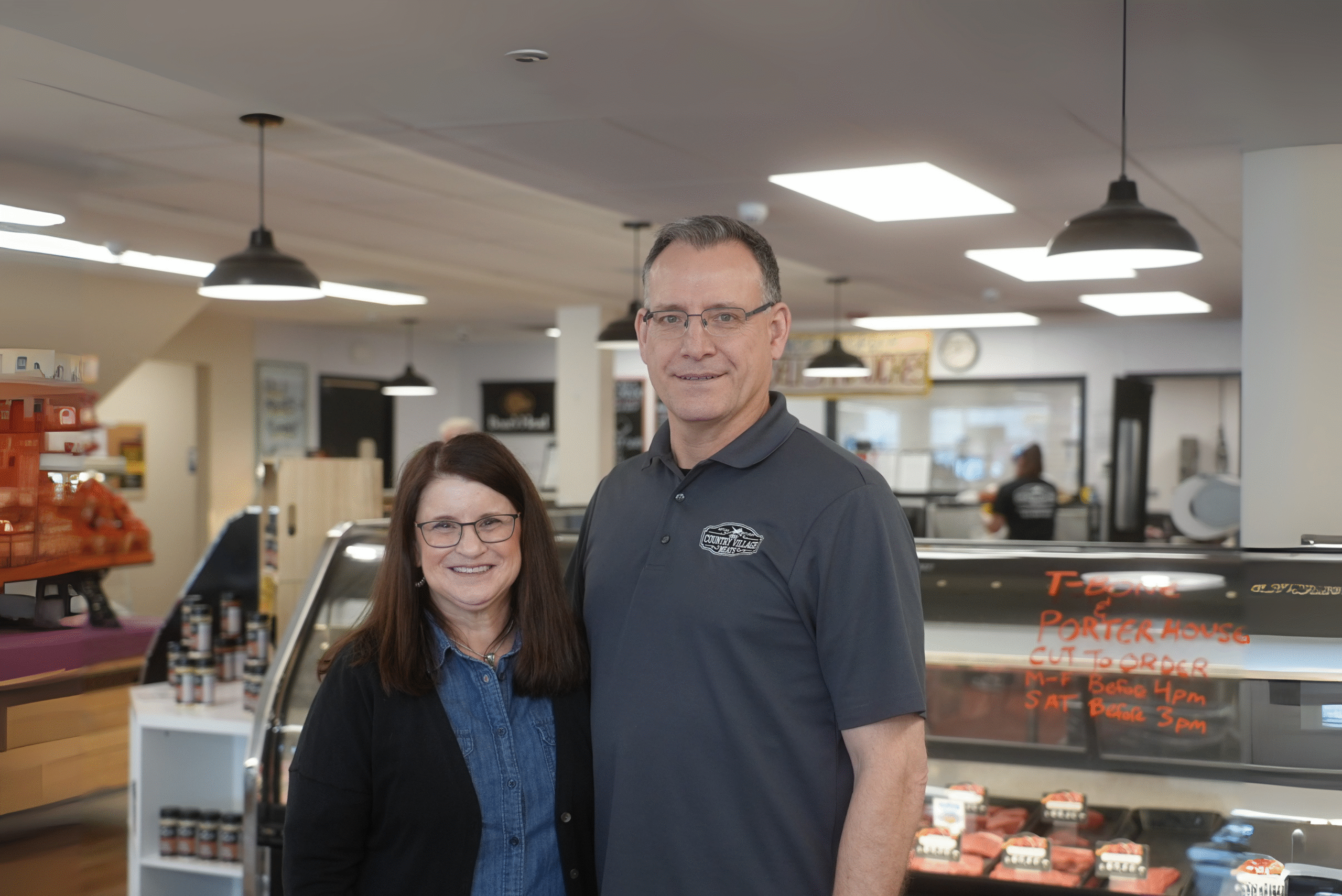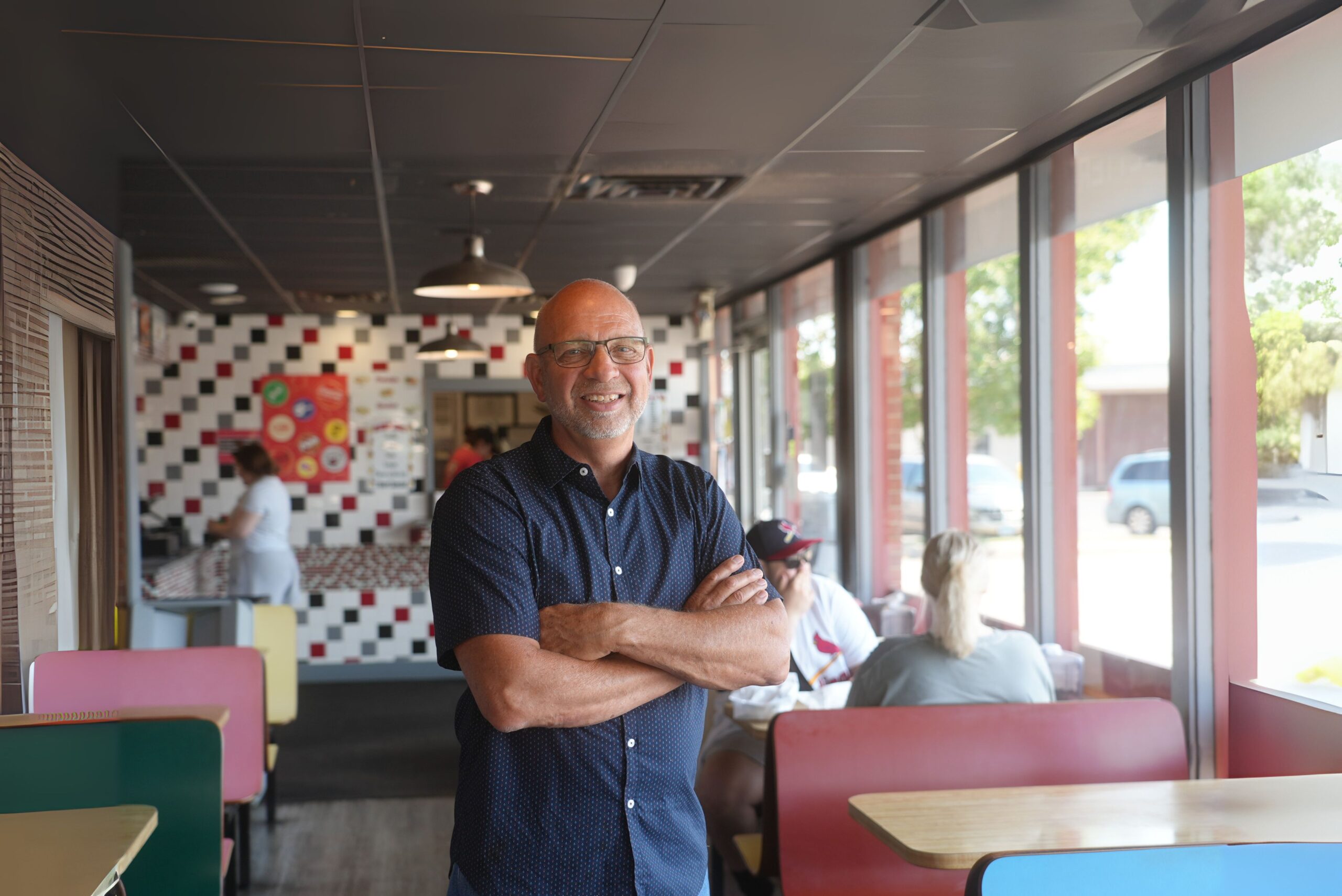Expanding from a rural location to a suburban market means adapting your business model while staying true to your roots.
Laurie and Paul Darrow, owners of Country Village Meats, began as a full-service butcher shop and meat processor in the rural town of Sublette, Illinois, offering fresh beef, pork, chicken, house-made sausages, jerky, and deli favorites, and grew into a beloved local brand in Geneva, Illinois.
Their story offers a roadmap for how to expand your retail business with purpose, sustainability, and long-term success.
If you’re looking for a retail expansion strategy that aligns with your values and adapts to new customer behavior, their experience delivers eight real, actionable lessons worth following.
1. Let Customer Demand Guide Your Expansion
Laurie and Paul didn’t choose Geneva at random. It was a decision based on years of observation and consistent local interest. Laurie had lived in Geneva and had long admired a specific storefront, noting, “I’ve looked at this building since we moved here and always thought it would be a neat location to own a shop.”
What truly pushed them to act was a steady stream of Geneva residents asking for easier access to their products.
The Geneva community had become familiar with their meats, especially those processed at the Sublette location, and was eager to enjoy those same offerings without the drive. It became a growing pattern in customer conversations, confirming that the area had untapped potential.
As you think about expansion, pay close attention to where your customers are coming from and what they’re asking for. Are you getting repeated questions about delivering to or opening in a particular area? Do local events, online orders, or word-of-mouth show concentrated interest from a specific city or neighborhood? Consistent demand from a nearby market, especially when voiced directly by potential customers, can be your most reliable indicator that it’s time to expand.
2. Choose a Location That Aligns with Your Long-Term Vision
Laurie envisioned the Geneva location for years. That vision stuck with her, even before the idea of expansion became a reality.
So when the property came up for sale during the COVID-19 pandemic, Laura and Paul saw the stars aligning. With the right building available in the right place, they took action and embraced the moment.
If you’re evaluating a potential new retail space, consider the following questions:
- Have you had your eye on this location for a while? Like Laurie, noticing and revisiting a space can be a sign that it fits your long-term vision.
- Does it match your brand experience? Ask yourself if your current customers would feel at home here. Could you recreate your customer experience in this space?
- Is the neighborhood aligned with your customer base? Make sure the surrounding community reflects the type of traffic and lifestyle that suits your products.
- Is the timing right for your business? Expanding before your original store is stable or moving into a space that’s “good enough” may do more harm than good.
A smart retail expansion strategy starts with patience. A new location should provide more square footage, reflect your brand identity, support your customer experience, and fit your long-term business goals. Like Laurie and Paul, you should wait for a space that feels like a natural extension of who you already are as a retailer.
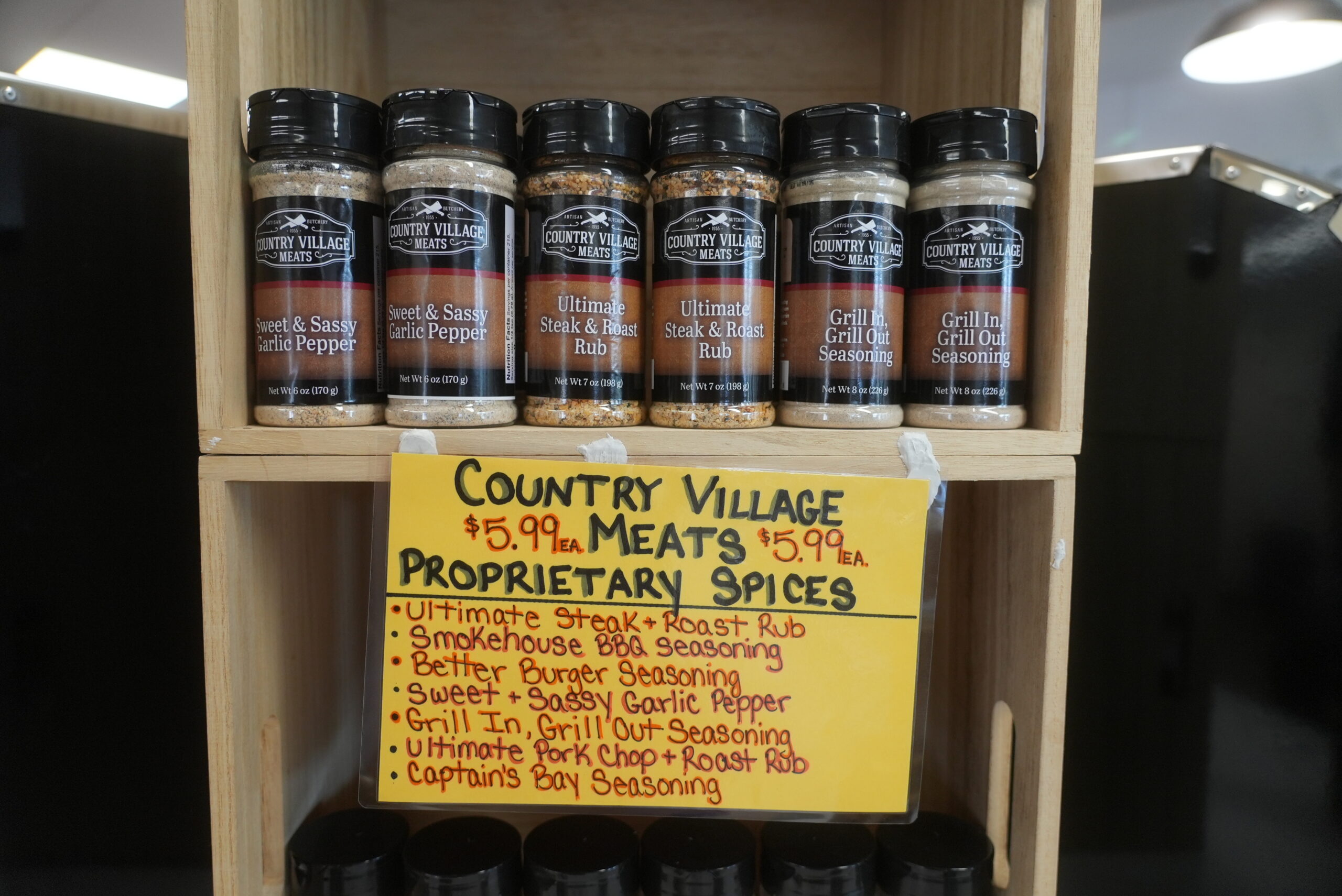
3. Use Local Development Tools Like TIF Funding
Renovating a retail space is a major investment, especially when you’re expanding into a new market. For Laurie and Paul, taking over their desired building in Geneva meant a full renovation. Fortunately, they didn’t shoulder the costs alone. They partnered with the city and successfully secured TIF (Tax Increment Financing) support, a municipal tool that helps fund improvements in targeted development areas.
To transform the space, they leveraged public-private collaboration so that they could preserve quality without compromising financial stability.
As part of a sustainable retail expansion strategy, leveraging resources such as TIF, local business grants, and renovation incentives can help reduce financial burdens and demonstrate your commitment to the economic growth of the community you’re entering. Like the Darrows, collaborating with your local economic development office can make the difference between a risky leap and a well-supported expansion.
4. Adapt Your Product Offering to Local Buying Behavior
Expanding into a new market often means adapting to a new way of life, and that includes how customers shop. In Sublette, where Country Village Meats first opened, the store served a rural customer base accustomed to bulk buying. Families would often purchase large quantities at once, from quarters or halves of beef to store in freezers. When they opened in Geneva, Laurie and Paul quickly realized that suburban shoppers had very different habits.
This shift required a fundamental change in how they stocked the store. Instead of bulk orders, the Geneva location focused on convenience: pre-marinated meats, grab-and-go deli sandwiches, and smaller portion sizes tailored to busy suburban schedules. The store became a resource for quick dinner solutions that fit the pace of modern family life.
Every market has unique habits, and replicating your original store model exactly may not work in a different setting. Observe how your new customers live and shop, then adjust your product sizes, packaging, and inventory to fit their lifestyle. As Country Village Meats discovered, meeting customers where they are is key to building loyalty in a new location.
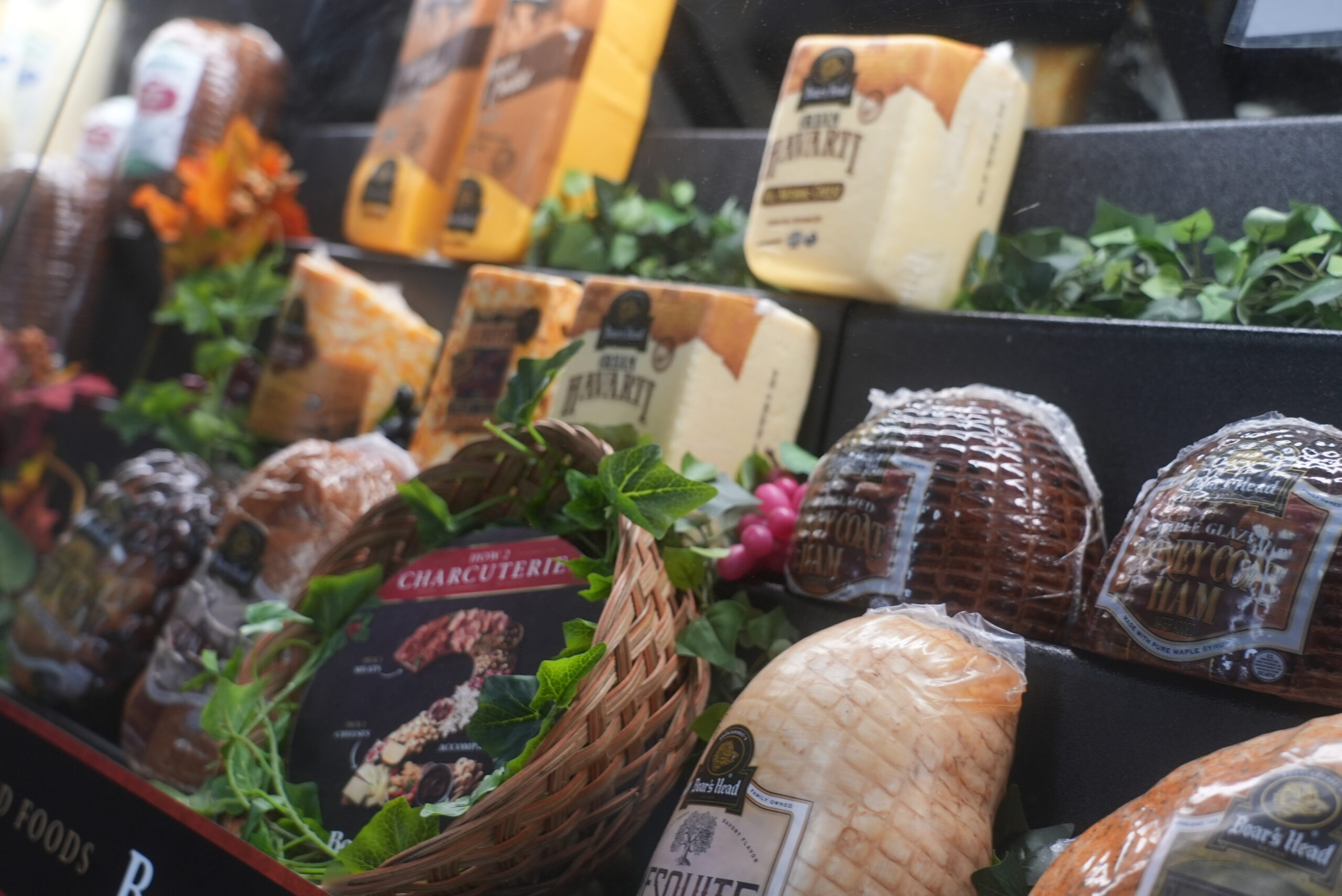
5. Balance Familiar Products with Local Offerings
When opening the Geneva store, Laurie and Paul knew they needed to build trust with new customers while still honoring the loyal following they had cultivated. To do this, they brought their signature staples, including smoked sausages, house-made bacon, brats, and jerky, into the new location. These familiar products maintained brand consistency but also gave first-time shoppers a chance to experience what Country Village Meats is known for.
The Darrows also understood that success in a suburban market meant being locally relevant. That’s why they introduced a wide selection of goods from regional makers, including barbecue sauces crafted by local Geneva artisans, maple syrup from Wisconsin and Illinois, and even CBD dog treats made in Batavia. By blending house-made favorites with community-sourced items, the Geneva store felt both connected and responsive.
To strike a similar balance in your own retail expansion strategy, think about doing the following:
- Bring your bestsellers: Products your customers already love can help establish credibility in a new market.
- Partner locally: Add products made by artisans or businesses in the neighborhood to boost your relevance instantly.
- Curate intentionally: Choose complementary items that align with your brand’s values, like quality, craftsmanship, or sustainability.
- Stay flexible: Test new products and rotate seasonal or local favorites based on feedback.
Introducing your tried-and-true products gives customers a taste of your original brand, while local retail partnerships show that you’re investing in their community. This blend of consistency and customization makes your store feel both trustworthy and tailored to your new audience.
6. Expand Only When Your Core Business Is Stable
Laurie and Paul didn’t leap into expansion. When they purchased Country Village Meats in 2018, the business had just 6–8 employees, including the previous owners. Over time, they built up the Sublette operation by expanding the product line, but also scaling their team to more than 20 employees.
They also took pride in creating solid systems, a dependable customer base, and a consistent production pipeline between the Sublette processing facility and the retail store. By the time the Geneva opportunity became viable, they had confidence in their original store’s ability to function without constant, hands-on oversight.
A great retail expansion strategy is all about ambition aligned with timing. Before you consider opening another location, make sure that your original business is running smoothly, your staff is capable and empowered, and your operations can function without being overly dependent on you as the owner. Stability at your foundation gives you the freedom and structure to grow in a new market without compromising your standards.
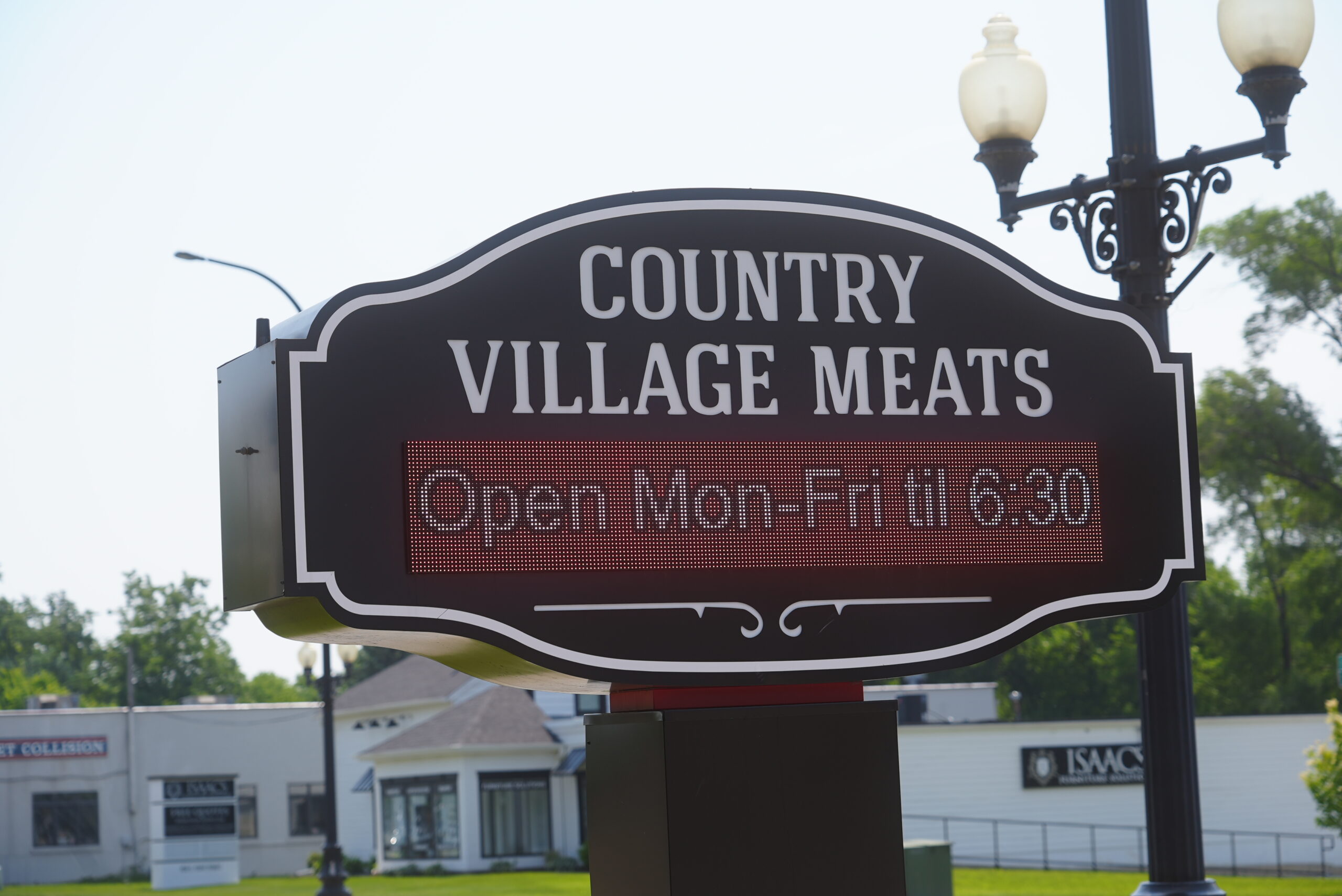
7. Localize Your Store Experience, But Keep Your Brand Consistent
Expanding into a new market doesn’t mean abandoning who you are. When Laurie and Paul opened their Geneva location, they made adjustments to fit the suburban context. Still, they were careful to preserve the essence of what made Country Village Meats successful in Sublette.
The atmosphere remained warm and welcoming. The focus on high-quality, house-made products stayed front and center. Their relationships with customers continued to drive decisions, just as they had in their rural roots.
Consider these strategies for keeping your brand consistent as you adapt to a new market:
- Adapt your layout to fit the new space and customer traffic flow, but keep visual branding, signs, and brand tone consistent.
- Keep your core products so returning customers recognize familiar favorites, even if surrounded by new local goods.
- Train staff to reflect the brand’s values, like hospitality, transparency, and flexibility, so the customer experience feels the same across locations.
While your second store should reflect the tastes and routines of its neighborhood, your brand identity, mission, personality, and commitment to quality should always remain intact. Customers should feel a sense of familiarity because that emotional continuity is what keeps your brand strong across markets.
8. Build Relationships with the Community Before You Open Your Doors
For the Darrows, expanding into Geneva was about reaching new customers while also becoming part of the community. From the very beginning, they approached the process with a spirit of collaboration. They partnered with local producers whose products would appear on their shelves. They welcomed conversations with neighbors, supported community initiatives, and relied heavily on word-of-mouth marketing to build anticipation for the new store.
Their success came from establishing real relationships.
Having a successful retail expansion strategy is about social connection. By engaging with the people who live and work in the area before the store even opened, the Darrows built a sense of trust and belonging that carried into their grand opening and beyond. When you treat potential customers as future partners and advocates, your store becomes an essential part of the new neighborhood.
Conclusion
Expanding your retail store from a rural to a suburban market requires adapting to new customer behaviors and expectations while remaining true to your brand’s mission.
Country Village Meats’ thoughtful expansion proves that growth can be organic, intentional, and rewarding. By listening to demand, adapting to the community, and preserving their core values, Laurie and Paul have created a second location and a second home.
If you’re ready to grow your retail business, take a cue from their journey and build your future one community at a time.
Want to learn more about other Illinois retail stories? Read inspiring stories from retailers across Illinois who are making a difference.
If you loved learning about Country Village Meats and know a retailer who deserves recognition, Nominate A Retailer to submit your nomination!

